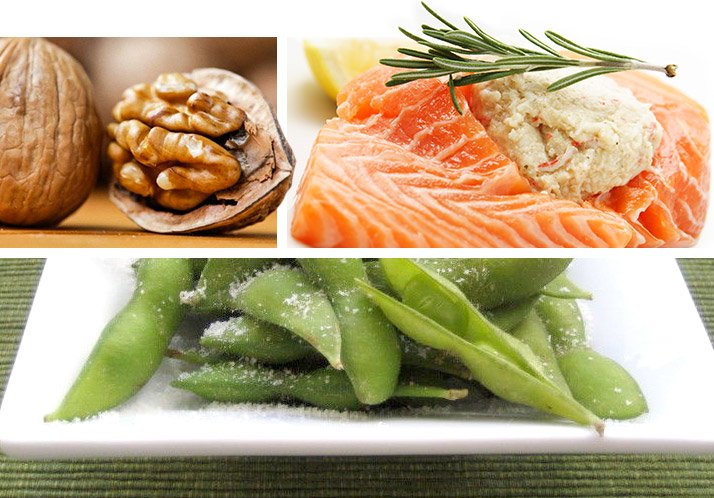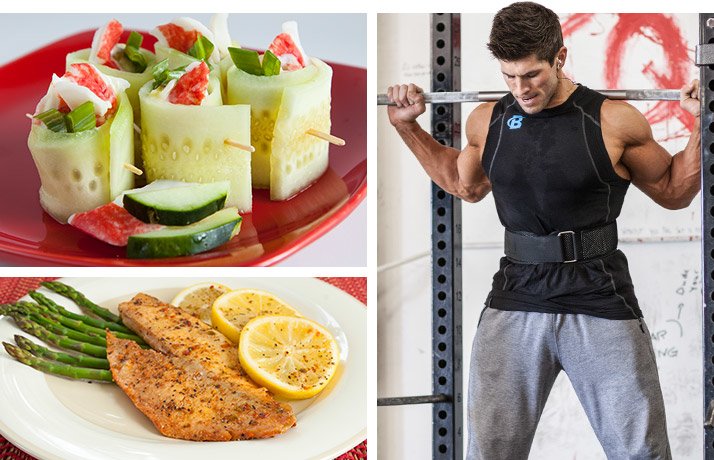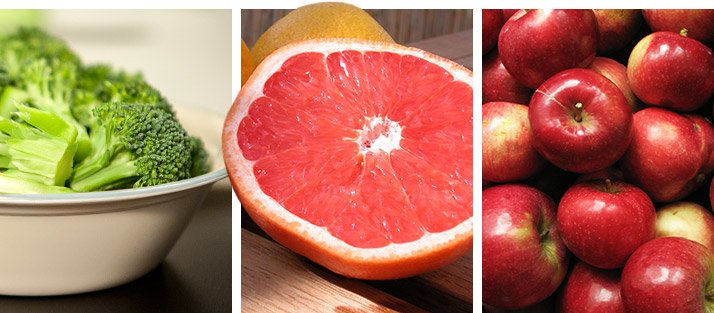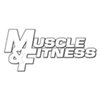
Main | Q&A | Burn Fat | Build Lean Muscle
1 If weight loss (and maintenance) really comes down to the matter of calories in versus calories out, can I reach my goal by staying under a certain amount of calories per day?
True, the most important factor for weight loss is burning more calories than you eat. But to ensure you're burning off body fat and not muscle—and to build muscle while burning body fat—your macronutrient intake becomes critical.
Since muscle is composed of protein, it makes sense that you need ample amounts of protein. So when trying to drop body fat, you don't want to lower protein intake.
We now know that eating fat does not lead to fat gain, especially when you eat the right kinds—namely, essential fats like the omega-3 and monounstaurated fats. In fact, these fats actually encourage fat loss.
Unlike protein and fat, which are essential, there are no essential carbs. That's because your body can convert protein and fat into carbs. So to lose fat you should start by reducing carb intake.
This method also helps to keep insulin levels low and steady, which allows for greater fat burning and less fat gain.

2 What combination of macronutrients should a healthy, active woman shoot for on a daily basis?
Typically we suggest about 1 to 1.5 g of protein, about 1 g of carbs or less, and about 0.25 to 0.5 g of fat per pound of bodyweight.
That comes out to about 11-15 calories per pound of bodyweight.
3 Aside from protein, carbs and fat, what should I be looking at on nutrition labels as far as what to eat and what to avoid?
Most of the food you eat should be fresh, unpackaged food that doesn't necessarily have a nutrition label on it—fish, chicken, steak, eggs, veggies and fruit. This, along with your supplements, is where your micronutrients, such as vitamins and minerals, will be coming from.
With packaged foods, focus on the major macros. Fiber is part of the carb macro, so the more fiber the better. And check that the sugar content is less than half the total carbs.
Also be sure that there are zero trans fats, as well as nothing as hydrogenated or partially hydrogentated—code words for trans fats.

4 If weight loss is predominantly about calories in versus calories out, isn't it better to skip meals if I'm not hungry?
Not really, as that can put your body in starvation mode, which slows your metabolism down and causes you to store more fat when you do eat.
5 What are the pros and cons of low-carb diets?
A lot of people complain they have no energy when eating low carb and have difficulty working out.
This is true during the first couple of weeks of being on a low-carb diet. That's because in those who have been eating higher carbs, their bodies have adapted to burning carbs as a primary fuel source.
When those ample carbs are suddenly gone, the body first struggles to burn adequate amounts of fat for fuel. However, after a few weeks of sticking with a low-carb diet, the body adapts by increasing the enzymes involved in burning fat, and becomes more efficient at burning fat for fuel.
6 Can I stay on a low-carb diet forever?
One problem with low-carb and low-calorie diets is that if you stay on them for too long, your leptin levels will drop.
Since leptin keeps your metabolic rate up and your hunger down, lower levels of it mean that your metabolic rate also drops and your hunger rises.
To prevent this, you need a high carb, higher calorie day about once per week.
7 Can a low-carb diet be maintained year-round, even after I've reached my goal?
There really is no reason to go back to a high-carb diet for prolonged periods.
However, those on a very low-carb plan (less than 0.5 g per pound) should have a high-carb day (2 g or more per pound) about once per week. That's because, as stated previously, when you follow a very low-carb and low-calorie diet, your levels of the hormone leptin can start to decline.
This lowers the metabolic rate and increases hunger. A day of high carbs helps raise leptin levels back up to keep your metabolism high and hunger low.

Carbs Defined: A predominant energy source for your body, carbohydrates are found in a wide range of foods, such as pasta, grains, fruits and veggies.
During digestion, carbohydrate molecules are absorbed into the bloodstream and shuttled to individual cells. There, glucose—the most common form of carbohydrate—is transformed into glycogen for later use or used directly for energy.
Once the body's glycogen stores are full, any extra carbohydrate is synthesized into fat.
8 What are the best and worst sources of carbs?
Obviously, you want to focus on slow-digesting carbs at most meals—oatmeal, sweet potatoes, whole-grains and some fruit. One really problematic carb is fructose, which is found in fruit and in products using high-fructose corn syrup.
Fructose is a sugar the body doesn't use well. The majority of fructose we consume gets converted to glucose in the body, mainly in the liver. But when there are ample glucose stores, the liver can also convert fructose into fat.
So it's hard to predict whether that piece of fruit is going to be stored as glycogen or converted into fat.
9 Should carbohydrate intake be tapered throughout the day?
Yes, most women should taper carbs, because insulin sensitivity is lower later in the day. That means that you have to release more insulin for the same amount of carbs—and since insulin inhibits fat burning and discourages fat loss, that can be bad.
If you train later in the evening, you don't need to curb your intake of carbs around workouts, since they will be used to fuel the workout and recovery and won't be stored as body fat.
10 Should I avoid dairy when trying to get lean?
Not necessarily. Dairy—especially organic dairy—is not only a very high-quality protein source that is rich in glutamine, but it is a good source of conjugated linoleic acid and omega-3 fats.
Whey protein and casein protein powders come from dairy. You simply can't get a better protein source around workouts, so why avoid them?
11 Will eating fat make me fat?
Not if you are eating the right kind of fats. Fat is an energy source, just as carbs and protein are. But fats also perform important functions in the body. They are used to make up cell membranes, such as those that encase muscle cells.
The essential fats—the omega-3s and omega-6s—are used in the body to make critical chemical messengers known as prostaglandins. These are important for joint and muscle recovery, as well as numerous other important functions.
Now we know that the omega-3 fats also activate genes that encourage fat burning and blunt fat storage. You need about 20-30 percent of your total daily calories to come from fat.
12 What's the right way to cheat on a diet?
It is actually beneficial for those eating a low-carb diet to cheat once a week by having a very high-carb day (at least 2g of carbs per pound of bodyweight).
For those on a moderate-carb, maintenance diet, or trying to add muscle, try a cheat meal once per week—anything you want, like pizza or a burger and fries. And dessert. Eat what you crave most. This one meal won't derail your progress, but will make a world of difference in your sanity while dieting.
When you allow yourself this one cheat meal per week, it's a carrot you can dangle in front of yourself—you are actually less likely to cheat the rest of the week.
After that cheat meal, most people feel satisfied and ready for another week of clean eating before cheating again.
Post-Workout Fuel: We also know that for athletes, the best way to refuel your muscles and recover stronger is by consuming some fast-digesting carbs, such as sugar or better yet, pure dextrose, after a workout.
Although you should avoid these foods most times of the day, avoiding them after workouts can hamper your progress.
13 Do I need to weigh my food before each meal? What if I don't have a food scale?
You do not need to weigh all food. When you buy meat, the weight is on the package. You can estimate the weight of a chicken breast by dividing the number of chicken breasts in the package by the total weight of the package.
14 What are the best and worst condiments to use?
The worst condiments are those that contain high fructose corn syrup, as many ketchups and barbecue sauces do.
Mustards are great, as the mustard seed has been shown to boost fat burning. And soy sauce is fine, too—in moderation—as it is low in calories.
15 Is it OK to season my foods? Which seasonings are OK to use and which should I stay away from?
Yes, do yourself a favor and season your foods to enhance the flavor. It's easier to eat "clean" when the food tastes good.
The absolute best seasonings and spices are cayenne pepper, garlic and ginger, since these not only punch up the flavor of your foods, but also punch up your fat burning and also provide numerous other health benefits.
Salt is fine too, as you only need to worry about cutting sodium during the final week before a contest or photo shoot.
16 How will drinking alcohol affect my diet?
Alcohol is not as bad as you may think, as long as you keep in moderation, as research shows those who are moderate drinkers do not gain as much weight over the years as those who abstain.
In fact, hard liquor and wine offer certain health benefits. Alcohol itself doesn't get converted into body fat; however, excessive alcohol can alter the biochemistry of the body to make fat storage easier.
So try to keep it to a glass or two of alcohol once or twice per week.
17 Are some vegetables better than others?
All vegetables are good if you stick with true vegetables. True vegetables are low in starchy carbs, but high in fiber. These include foods like broccoli, asparagus, spinach, kale and cauliflower.
Corn is high in starchy carbs, but it is technically not a veggie, even though most people think of it that way. Corn is actually a grain, much like wheat and rice. One cup of corn has over 40 g of carbs, whereas one cup of chopped broccoli has only 6 g.
And, obviously, watch your intake of potatoes, which are classified as tubers. White potatoes are not only very starchy, but they digest very rapidly, which boosts insulin levels.

Measuring Stick
Food
Ice-Cream Scoop
1/2 cup cooked rice/pasta/oatmeal
Tennis Ball
1 medium fruit (apple/orange/pear)
Yo-yo
Bagel
Fist
4 oz chicken, beef, turkey, fish
Thumb
1 oz cheese
Handful
1 serving nuts (almonds, walnuts, cashews)
Know Your Fats
The Good:
-
Monounsaturated fats lower total cholesterol and LDL cholesterol (the bad cholesterol) while increasing HDL cholesterol (the good cholesterol). Nuts (walnuts, almonds), avocados, canola and olive oil are high in MUFAs.
MUFAs have also been found to help in weight loss, particularly body fat.
-
Polyunsaturated fats also lower total cholesterol and LDL cholesterol. Seafood like salmon and fish oil, as well as corn, soy, safflower and sunflower oils are high in polyunsaturated fats. Omega-3 fatty acids belong to this group.
The Bad:
-
Saturated fats raise total blood cholesterol as well as LDL cholesterol. Saturated fats are mainly found in animal products such as meat, dairy, eggs and seafood.
Some plant foods, such as coconut oil, palm oil and palm kernel oil are also high in saturated fats.
-
Trans fats were invented when scientists began to "hydrogenate" liquid oils so that they could better withstand the food production process and give foods a longer shelf life. As a result of hydrogenation, trans fatty acids are formed.
Trans fatty acids are found in many commercially packaged foods, in commercially fried food such as French fries from some fast-food chains and in other packaged snacks such as microwave popcorn, as well as in vegetable shortening and hard-stick margarine.
The Glycemic Index
The glycemic index (GI) ranks carbohydrates according to their effect on blood sugar levels.
Low GI foods are burned steadily throughout the day to give you a constant supply of energy. High GI foods are readily transported to fat cells if you don't burn them off quickly.
Choosing low GI carbs—the ones that produce only small fluctuations in blood glucose and insulin levels—is the secret to long-term health, reducing your risk of heart disease and diabetes, and is the key to sustainable weight loss.
We recommend high GI foods only after training to spike insulin levels in order to spark lean muscle growth.
GI Chart
Foods in the low category usually have a GI value of 55 or less; in the medium category, a GI value of 56 to 69; and in the high category, a GI of 70 or more.

- Broccoli: 15
- Grapefruit: 25
- Apple: 38
- Whole-grain bread: 50
- Sweet potato: 54
- Oatmeal: 58
- Pizza, cheese: 60
- Spaghetti: 61
- White rice: 64
- Table sugar (sucrose): 65
- White bread: 71
- Watermelon: 72
- Rice cakes (white): 78
- Jelly beans: 80
- White potato (baked): 85
